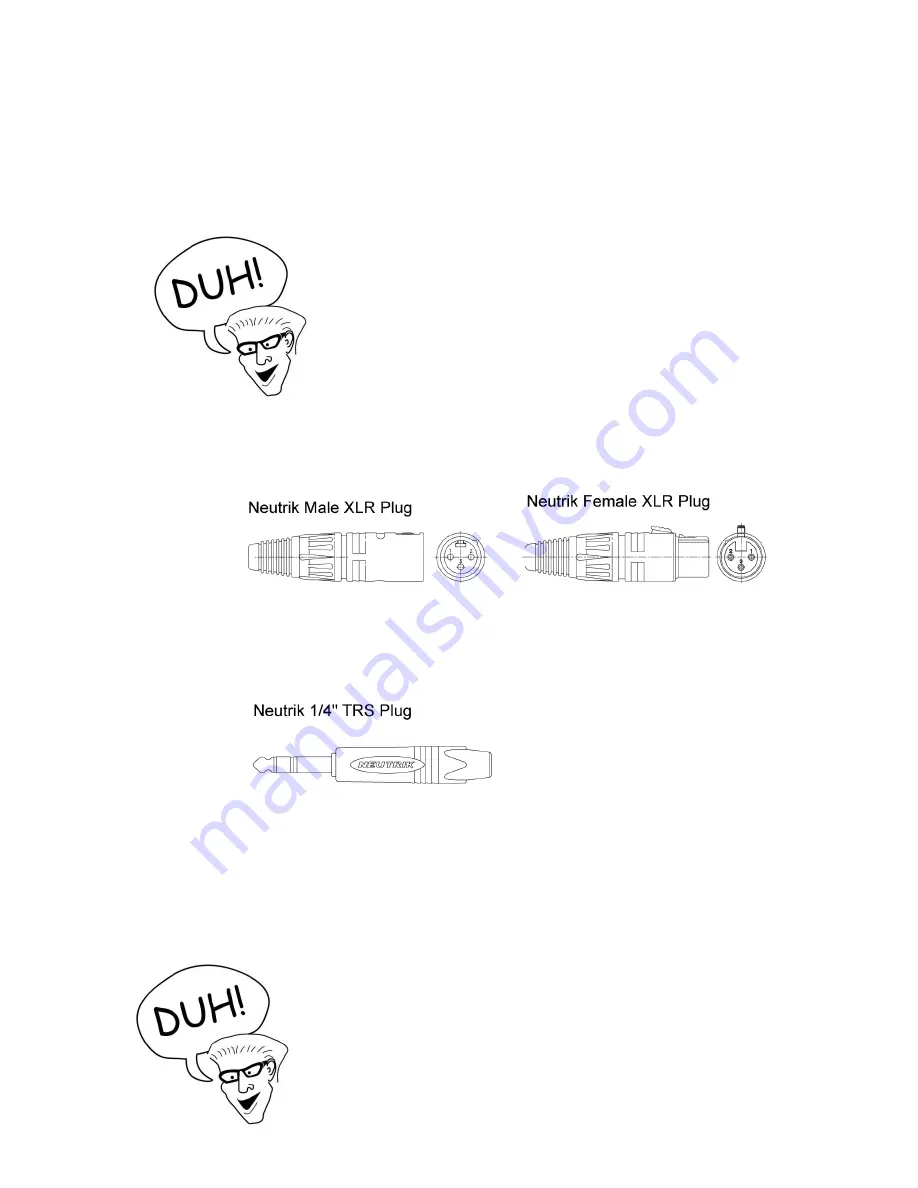
14
1.5 Back Panel
1.5.1 In General: XLR Connectors
XLR connectors are more expensive, more reliable and offer a stronger
connection than ¼” TRS connectors. They also have the option of a
locking latch that helps to keep the cable from being pulled out
accidentally. If worse comes to worse, you can connect two
XLR cables together to make a longer run. The XLR connection
is strong enough that you can swing a hand-held microphone
around your head like a cowboy for quite a long time before the
mic flies off and knocks someone‟s teeth out.
XLR males are used for Outputs and XLR female are used for
Inputs. Makes sense, right? Many people confuse the male and
female XLR parts, because the female plug fits into the male
plug to join together. The male XLR has 3 pins (male pins…) inside the
plug and the female XLR has three holes inside the plug (female holes…).
Check out the diagrams below:
1.5.2
Line Input (XLR or ¼” TRS)
The line input accepts a line-level signal, not a mic level or instrument
level signal. You connect to the input of your compressor with an XLR
cable at +4bBu.
Your compressor is not expecting a microphone-level signal and
definitely not a speaker-level signal! If you want to compress a
mic signal you need to run the mic into a mic pre-amp first (a
Daking Mic Pre is a good choice!), which boosts the gain of the
signal from mic level to line level. Then you can send the output























